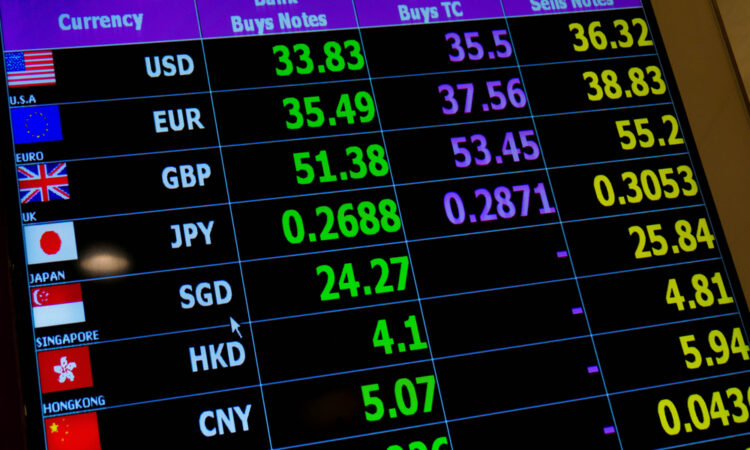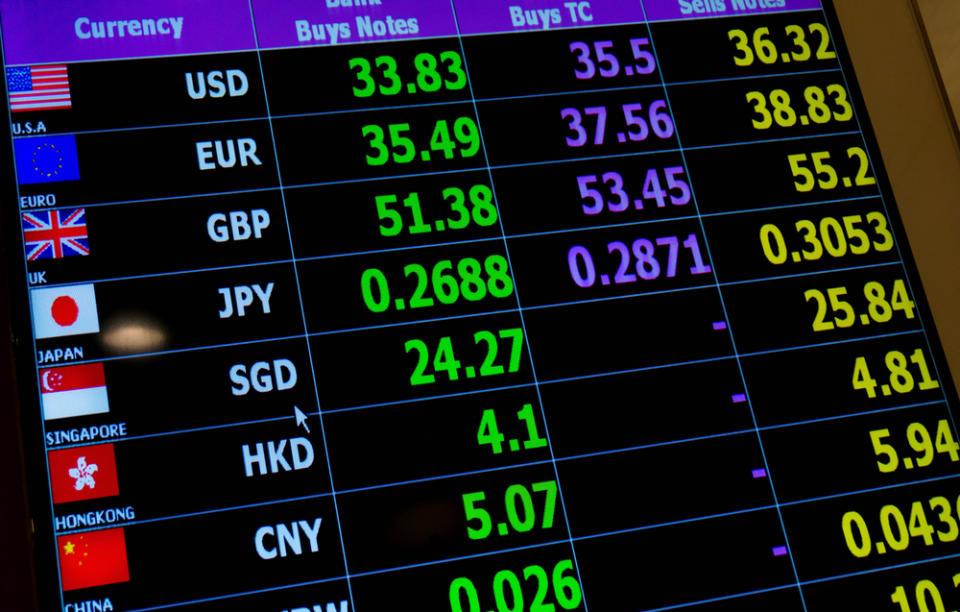
In this article, we will be taking a look at the 20 countries with the largest foreign reserves in 2023. To skip our detailed analysis, you can go directly to see the 5 countries with the largest foreign reserves in 2023.
Foreign reserves refer to reserves which can include cash in foreign currencies and various other assets as well including gold, generally held by central banks of nations. There are various reasons that countries have foreign reserves including ensuring that their own currency value remains constant at a fixed rate. For example, China has pegged its currency, the yuan to the U.S. dollar, the most valuable currency in the world, and has been so since the end of World War 2. It then buys and stockpiles U.S. dollars to increase the value of the U.S. dollar against the yuan which in turn makes exports cheaper and more competitive. Similarly, other countries such as Japan also buy U.S. dollars despite implementing a floating exchange rate, which ensures that the yen remains cheaper as compared to the dollar, and hence allows its exports to be more competitive too.
Not having significant foreign reserves can come back to haunt a country especially in times of an economic crisis, as witnessed by Sri Lanka. Between 2019 to 2022, Sri Lanka’s foreign reserves fell by nearly 99% and resulted in the country having to default on its sovereign debt for the first time, while inflation increased to nearly 40% in 2022. This is one of the reasons why the countries with the largest foreign reserves in 2023 are considered to be more secure, as their foreign reserves can ensure the ability to pay back international obligations even amid an economic crisis remains strong. At the same time, lack of foreign reserves in a crisis can see the value of local currencies plummet, deepening a crisis.


Image Source: Shutterstock
A good example of this is Pakistan’s economic crisis, which is currently ongoing. Excessive borrowings combined with low exports and a turbulent political situation which resulted in the country’s elected Prime Minister being overthrown in 2022 have all come together to create significant doubts regarding Pakistan’s ability to pay back its debt, and its currency has been devalued by over 100% in just the last five years. On 26th January 2023 alone, the Pakistani rupee dropped by nearly 10% in a single decade as its forex reserves fell from $3.68 billion to under $1 billion. Unsurprisingly, Pakistan isn’t anywhere near the countries with the highest foreign reserves in 2023.
While many countries hold and denominate their foreign reserves in the U.S. dollar because of its undisputed position as the global leading currency, many countries are aiming to move away, especially as several developing countries are gaining greater influence because of their increasing contribution to the global economy. In fact, global foreign reserves fell by 10% as countries scrambled to counter the impact of a rising U.S. dollar. BRICS, an organization which includes Brazil, Russia, India, China and South Africa, was established in its current form in 2010, and is home to some of the biggest developing and semi-developed economies to facilitate trade and be free from Western influence. Reuters reports on August 24, 2023, that Brazil’s president suggested using a common currency to engage in trade between the nations so as to prevent dollar shocks from impacting their operations. Meanwhile, China’s yuan is another currency which has been in the running to become the world’s leading currency as China is widely expected to become the world’s largest economy by 2075, and is easily among the countries with the largest foreign reserves in the world. However, the Chinese yuan has suffered as a result of China’s economic stagnation resulting in the country imposing measures such as purchases of more than $50 million requiring approval from the Bank of China.
The International Monetary Fund, also has a reserve currency list, called the Special Drawing Rights (SDR). The SDR itself is not a currency but a combination of a basket of some of the top currencies in the world including USD, euro, China’s renminbi, pound sterling and the Japanese yen. The SDR is regarded as an asset which can be exchanged for other currencies when needed, and only IMF members, and the IMF itself can hold SDRs. Unsurprisingly, all the countries which form the weightage of SDRs are also among the list of countries with the largest foreign reserves in 2023.
Methodology
To determine the countries with the largest foreign reserves in 2023 by country, we determined the holdings of each country via information from their central bank. Where the foreign reserves by country have been denominated in the country’s local currency, we have converted them to the U.S. dollar for uniform comparison. The data is based on the latest available information from each country, generally either in July, August, September or October 2023.
20. Poland
Total forex reserves as at June 2023 (in millions): $180,700
Poland’s fast growth in the last two decades has been reflected in its foreign reserves increasing at the same time. In September, Poland’s central bank slashed interest rates in an unprecedented decision, resulting in the zloty falling 3 percent against the Euro.
19. United Kingdom
Total forex reserves as at October 2023 (in millions): $183,083
Disastrous monetary policies amid political turbulence led to the pound sterling falling heavily in 2022, and in September 2022 reached its lowest-ever level against the U.S. dollar, though it has recovered somewhat since.
18. Israel
Total forex reserves as at October 2023 (in millions): $191,235
Amid its war with Gaza, Israel’s central bank sold $30 billion of foreign reserves to support the Israeli shekel. Between September to October, Israel’s foreign reserves have fallen by $7 billion.
17. Mexico
Total forex reserves as at September 2023 (in millions): $209,626
Mexico is home to some of the largest foreign reserves in 2023 and effective monetary policy has allowed the Mexican peso to overcome interest rate pressure and global inflation.
16. Thailand
Total forex reserves as at September 2023 (in millions): $190,628
Amid rising geopolitical uncertainty and rising interest rates, Thailand’s central bank has begun to use gold as a hedge against war and inflation, with its gold reserves doubling since 2019.
15. France
Total forex reserves as at September 2023 (in millions): $229,730
France’s economic activity has slowed down recently, reflected in the country’s decreasing forex reserves. France’s TotalEnergies recently completed a major LNG transaction with Chinese national oil company, CNOOC, in yuan for the first time.
14. Italy
Total forex reserves as at September 2023 (in millions): $231,926
Italy’s commercial banks have heavily drawn on their reserves to pay back the leftover portion of the 28 June 2023 TLTRO III maturity. This has contributed to an overall decline in Italy’s foreign reserves, but Italy is still among the countries with the largest foreign reserves in 2023.
13. United States of America
Total forex reserves as at October 2023 (in millions): $239,545
The U.S. doesn’t have the highest foreign reserves in the world, with the reserves declining for around a decade now. This isn’t due to government intervention but due to an appreciating dollar, especially in the last year.
12. Germany
Total forex reserves as at October 2023 (in millions): $300,965
The largest economy in Europe, Germany’s central bank Bundesbank reported its first loss in more than 40 years.
11. Singapore
Total forex reserves as at July 2023 (in millions): $337,397
Singapore is among the countries with the largest foreign reserves in 2023 to enable it to maintain an exchange rate centered policy.
10. Brazil
Total forex reserves as at September 2023 (in millions): $344,177
Brazil’s central bank, Banco Central do Brasil, holds forex reserves for transaction and precautionary purposes, to protect one of the world’s largest economies and the biggest economy in Latin America from external shocks.
9. South Korea
Total forex reserves as at October 2023 (in millions): $412,874
South Korea’s increase in foreign reserves has been consistent for the past 15 years, in line with its economic growth, as growing exports and external trade and capital flows have resulted in South Korea’s forex reserves crossing $400 billion.
8. Hong Kong
Total forex reserves as at July 2023 (in millions): $421,600
Hong Kong being among the countries with the largest foreign reserves in 2023 is primarily to back its ability to maintain the linked exchange system to the U.S. dollar. In the last year, Hong Kong dollar’s peg to the U.S. dollar has come under repeated stress tests as currency traders have attempted to exploit an interest rate gap amid economic headwinds.
7. Saudi Arabia
Total forex reserves as at September 2023 (in millions): $439,325
Saudi Arabia’s economy is continuing to strengthen significantly, and the trend is demonstrated by an increase in foreign reserves. Saudi Arabia increasing its foreign reserves reflect on the country’s ability to support its economy and manage its currency while protecting the economy from external shocks.
6. Taiwan
Total forex reserves as at October 2023 (in millions): $561,080
Taiwan’s central bank has stated that it will continue to maintain a high level of foreign reserves, cementing its position among the countries with the highest foreign reserves in 2023, in a bid to ensure that the domestic markets remain stable and provide protection in case foreign institutional investors suddenly move funds out of the country.
Click to continue reading the 5 Countries with the Largest Foreign Reserves in 2023.
Suggested articles:
Disclosure: None. 20 countries with the largest foreign reserves in 2023 is originally published at Insider Monkey.
